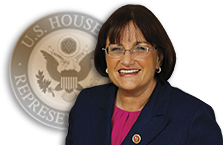In the News
N.H’s nursing homes are among the hardest hit in U.S., but received little federal aid
Washington,
November 19, 2020
Nursing homes have accounted for nearly 82% of New Hampshire’s total COVID-19 deaths, the highest rate in the county. Yet, in the most recent round of funding, they have received the third-lowest amount of funding per home, only behind Maine and Vermont. The most recent round of nursing home grants, announced in late October, were distributed to nursing homes that kept “new COVID-19 infection and mortality rates among residents lower than the communities they serve.” The distribution strategy was intended to incentivize nursing homes to stay vigilant with infection control by rewarding those who keep their infection rate lower than that of their county. However, in states with low rates of community transmission, like New Hampshire, nursing homes struggled to keep their numbers under infection rates that were already low – between August and September, the window of time HHS used to make their allocations, some counties in the state had just a handful of positive cases. This allocation strategy, New Hampshire’s congressional delegation argued, inherently disadvantages states with overall low rates of COVID-19 in the community. Nationally, nursing homes received an average of $24,777 from the most recent round of funding. New Hampshire homes received an average of $4,909, about five times lower.The high rate of nursing home deaths in New Hampshire is not a result of poor infection control, said Brendan Williams, the president of the New Hampshire Health Care Association. The state’s nursing homes have one of the lowest rates of infection-related deficiencies, according to inspection reports from the Centers for Medicare and Medicaid Services. “Nobody has invited this virus into their facility,” he said. “It is not a function of carelessness that this virus gets in.” Rather, New Hampshire nursing homes are getting less funding because the state has handled the pandemic well, Williams said. Yes, long-term care facilities were doing badly compared to the rest of the state but New Hampshire was doing well compared to the rest of the country, he said. “Why should we be punished because we’re not seeing a high level of community transmission?” Williams asked. “Shouldn’t that be a good thing?” Even if outbreaks were a result of a lapse of infection control, Williams isn’t sure withholding funding would fix the problem — a lack of money to hire staff can often exacerbate problems with infection control. Jeanne Shaheen, Maggie Hassan, Annie Kuster, and Chris Pappas sent a joint letter to the U.S Department of Health and Human Services on Tuesday, asking them to reconsider how funds are distributed. They suggested factors, such as the share of the state’s total COVID-19 deaths and cases attributable to nursing facility residents and staff, be considered in future rounds of funding. In the meantime, long term care facilities across the state are struggling. Eight homes are in the throes of severe outbreaks. Some facilities are so desperate for staff, they’ve resorted to Facebook to ask community members to volunteer. “The administration needs to distribute federal funding in a way that matches the full scope of the crisis we’re seeing in our communities,” Shaheen said. “The latest round of awards is woefully insufficient and fails to deliver necessary relief at a time when our facilities need help the most.” |
